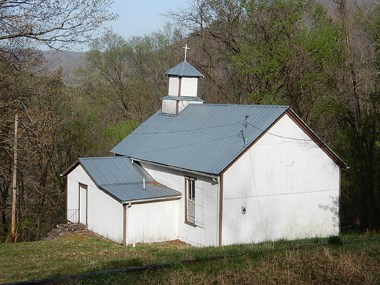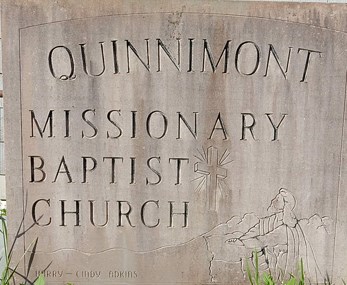
African American communities sprang to life in the coal camps and railroad towns of the New River Gorge in the late 1880s. These communities grew as more and more African Americans migrated to West Virginia in search of jobs. A source of both unity and heritage, black communities provided the essential elements for everyday living and survival.

NPS photo Having a religious affiliation and organizing a church was a significant element of the African American community. Most residents were Baptists who enthusiastically participated in church services on Sundays and throughout the week. The church, like Quinnimont Missionary Baptist Church, offered both spiritual and social activities weekly and throughout the year. These events regularly brought families and the community together. Important events included day-long Sunday programs, weekly socials, gospel sings and annual events. Helen Powell notes that at her church in Glen Jean, West Virginia, “We would have cookies and ice cream for the kids on Children’s Day. There was always a Mother’s Day program and programs for Father’s Day. They would have big birthday dinners, and everybody would pitch in and bring a dish. It was like a community affair.” 
Most African Americans growing up in this region remember that the work was hard and at times life was tough. However, they also remember having fun and time for recreational interests. African American families loved to visit, spending most Sunday afternoons with friends and family members. They enjoyed participating in baseball leagues, going to the movies, and attending musical events. Fishing and hunting were a pastime that many young boys and their fathers enjoyed doing together. Residents always looked forward to the annual visit of the Silas Green traveling minstrel show and its variety of black performers. Mr. Ellis Ross recalls some of his memories growing up as a child, “Children attended 4-H camp during the summer at Camp Washington Carver. There were all kinds of quartets around town and people played different instruments. At times, it was just like a talent thing, but for self-enjoyment and entertainment. Back then you didn’t have a TV so they entertained themselves.” Even though life for African Americans was at times very difficult, the support of churches, schools, and family built a strong community. |
Last updated: January 22, 2020
